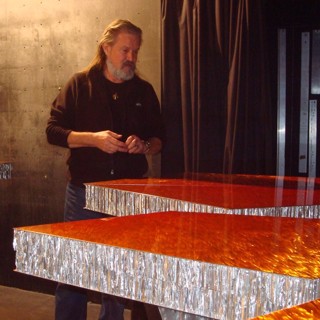Andreas Nottebohm

Andreas Nottebohm, born on October 13, 1944, in Eisenach, East Germany, is a German American artist known for transforming metal into mesmerizing works of art. A pioneer in metal painting, his work blends elements of Op Art, visionary art, and Space Art, creating a unique fusion of science and imagination.
As a teenager, Andreas Nottebohm moved to Munich, West Germany, where he studied at the Academy of Fine Arts under surrealist painter Mac Zimmermann from 1965 to 1969. His artistic journey took him across Europe, refining his etching skills in Paris with Johnny Friedlaender in 1968 and mastering lithography in Salzburg from 1971 to 1974. It was in the early 1970s that he had a breakthrough—experimenting with used etching plates as canvases, a technique that would define his career.
In 1978, Andreas Nottebohm crossed the Atlantic for a solo exhibition in Washington, D.C., and found himself captivated by the energy of the United States. He soon made the San Francisco Bay Area his home. Just a few years later, in 1981, NASA recognized his talent, commissioning him to create paintings commemorating the first launch of the Space Shuttle Columbia. His work has since found a place in prestigious collections, including the Crocker Art Museum, the Nevada Museum of Art, and the Smithsonian Institution’s Air and Space Museum.
With over 100 solo exhibitions across Europe and the U.S., Andreas Nottebohm has left an indelible mark on contemporary art. His innovative approach to metal painting continues to push artistic boundaries, seamlessly blending traditional craftsmanship with a vision of the future.
